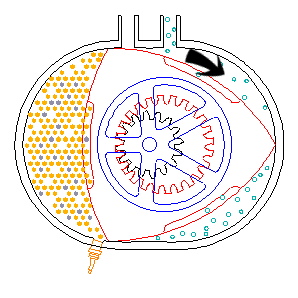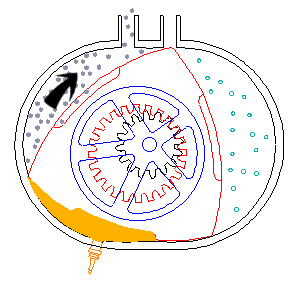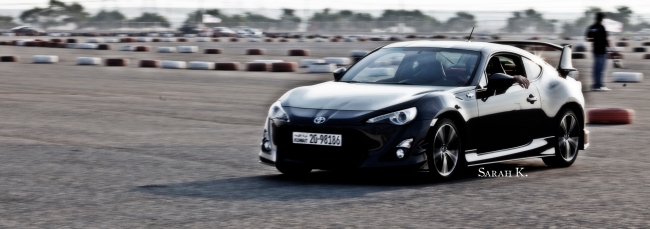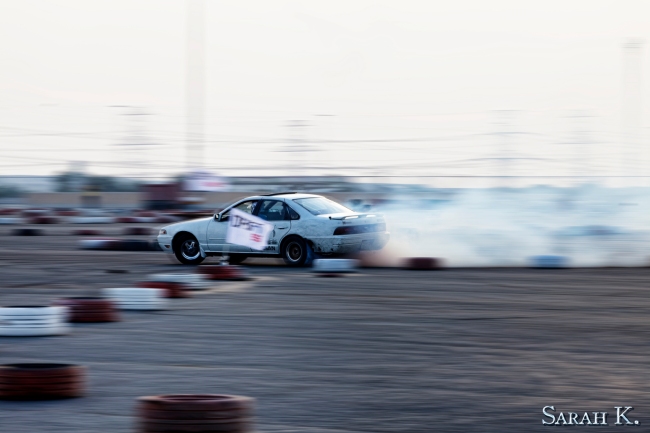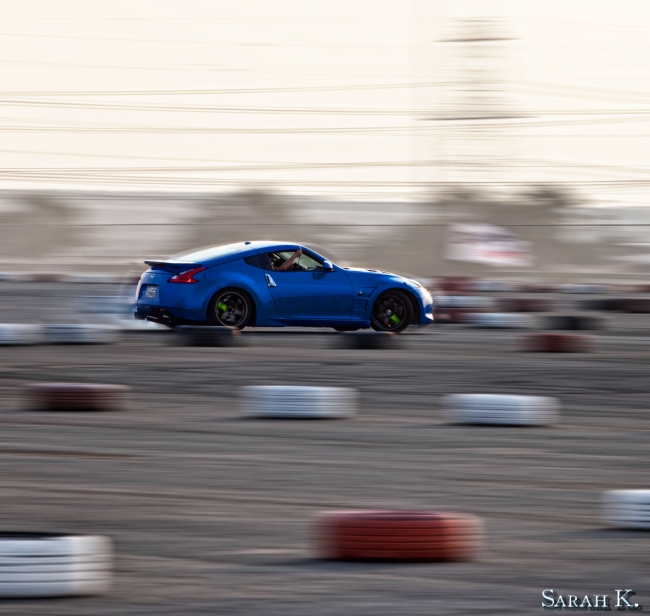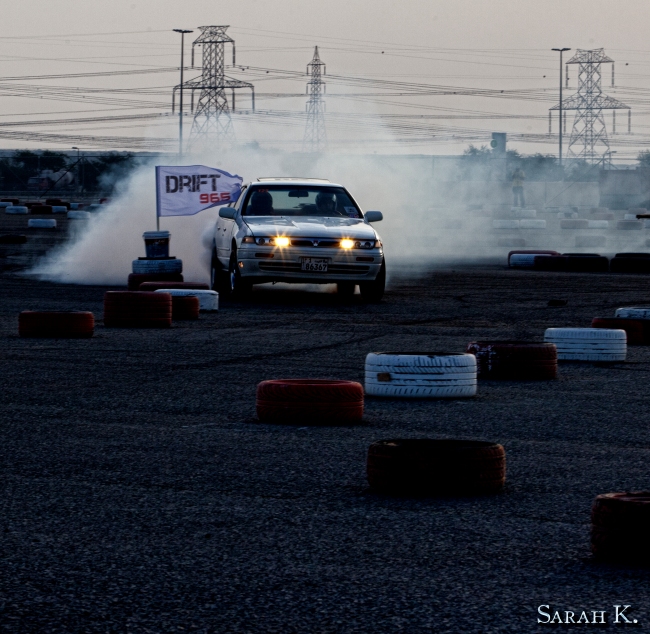
So you’ve probably been hearing about the Rotary engine for a while (Maybe not so much if you’re living in Kuwait). Well, if you’re wondering what a Rotary engine is exactly, and what’s the difference between the engine and the piston engine, well you’ve come to the right place. We’re going to break it all down to you.
Well, the Rotary engine is basically an internal combustion engine, basically the same one in your car. Everything back from the flywheel is pretty much the same, however infront of the flywheel, that’s where everything changes. The Rotary engine works and looks in a completely different way than your typical piston engine.
If you’re familiar with basic mechanics, you’d know that the standard piston engine uses a crankshaft and the connecting rods to convert the upwards and downwards motion of the pistons to rotary motion to power your vehicle. In the rotary engine the pressure is controlled in a small space by a part of the housing and sealed by a triangular rotor (imagine a spinning dorito, it pretty much looks like that). Which is what the rotary engine uses instead of pistons.
So for demonstration purposes, this is how your engine works:

With it’s 4 stroke cycle: Intake, Compression, Power and Exhaust.
And here’s how a Rotary engine works:

The triangular rotor follows a specific patter which keeps the peak of the triangular motor within contact of the housing, which engineered in such a way that the peaks of the triangular motor will always be in contact with the walls of the chamber. Each part of the housing is dedicated to one part of the combustion process.
The triangular rotor has peaks. Those “peaks” basically act like a piston. Since the rotor has three sides, those sides have pockets which increase the displacement of the engine to allow more increase of space for the air/fuel mixture.
As the rotor moves around, each volume of the gas in turn expands and contracts, which draws air and fuel into the engine, compresses it, and BAM! Power. After that, the exhaust is then that expelled.
Here’s how the combustion process works in the engine:
1) Intake: Fuel/Air mixture is drawn in the intake port. (Notice the one of the main differences between the two engines: There are no valves in the Rotary engine, instead it uses intake and exhaust ports which are directly connected to the exhaust and throttle respectively.)
2) Compression:- Mixture compressed in the yellow part
3) Power/Combustion: Mixture burns, driving the rotor.
4) Exhaust: Exhaust is expelled:
The rotary motion is then transferred to the drive shaft by the eccentric wheel (Above, in blue). The drive shaft rotates once during every power stroke instead of twice.
Since we got the basics out of the way (and I don’t want to get into too much details here), I’m going to come right down to the battle. PISTONS OR ROTARY?
If we go down to the simplest 4 cylinder engine, it would have ATLEAST 40 moving parts, including your pistons, connecting rods, camshaft, valves, rockers, timing belt, timing gear, crankshaft etc. and you have more with the increasing cylinder counts once you move into V8, V10, V12 configurations etc.) A two rotor engine has 3 moving parts (2 rotors and the eccentric shaft). This makes the rotary engine smoother, lighter, and produces higher RPMs. Your piston engine has to convert reciprocating motion into rotational motion and by doing so the pistons violently change directions. Rotary engine spin in one direction, and as a result are a lot more smoother.
One of the most important factors to put into consideration is that rotary engine are pretty much immune to total catastrophic failure. A rotary engine that loses compression, cooling or oil pressure will lose a large amount of power, but the engine is still able to produce power and operate. Piston engines under similar circumstances are prone to seizing or breaking parts that will result in major damage of internal engine parts resulting in an instant loss of power and operation.
Since it’s all good and dandy, here’s the bad sides:-
In a piston engine, the cylinder and piston have a rather large contact surface which is constantly lubricated and seals the combustion chamber against the crank case. In a rotary engine, the tips of the triangular rotor drive along the chamber walls to seperate the chambers. This means they have to be very precisely positioned and bear a lot of load, compared to a regular cylinder lining. The tips have to be extremely abrasion resistant and hard, but function as tight seals as well. That’s a difficult trick to pull of and makes the whole system somewhat less reliable. Also, a rotary engine will consume as much fuel as a V6, which gives it terrible gas mileage.
Also, the rotary engine is owned by Mazda. It’s design, improvements, and basically everything is owned by Mazda. You have thousands of companies in the world continuously working on improving the piston engine. With the rotary engine you have one company, which is Mazda, that’s actively restricting the ability of other companies to invest in it’s engine. Long story short, if you have 10 people working on one idea and 10,000 on another, you’re going to work more with latter idea. The piston engine is better-understood and its improvements are more accessible, someone working on a new engine improvement is more likely to start from that point than they are from a Rotary Engine point.
The average life span for a rotary engine is also normally less than that of a piston engine.
So, since you have all of that? Which would you chose? Rotary or Pistons?
Well, I’d personally go with my biased opinion.I prefer my engine Piston-runned. Viva La Pistons!

If you want to read/see more of the Rotary Engine:
http://www.nationalspeedinc.com/gear-and-tech/advantages-and-disadvantages-of-a-rotary-engine/
http://auto.howstuffworks.com/rotary-engine.htm
http://en.wikipedia.org/wiki/Wankel_engine
http://www.autoblog.com/2012/07/27/this-is-what-a-six-rotor-wankel-looks-and-sounds-like/
http://www.youtube.com/watch?v=6BCgl2uumlI
http://www.youtube.com/watch?v=lyItjvs8nvI
http://www.youtube.com/watch?v=ocZ0veZjiBs


